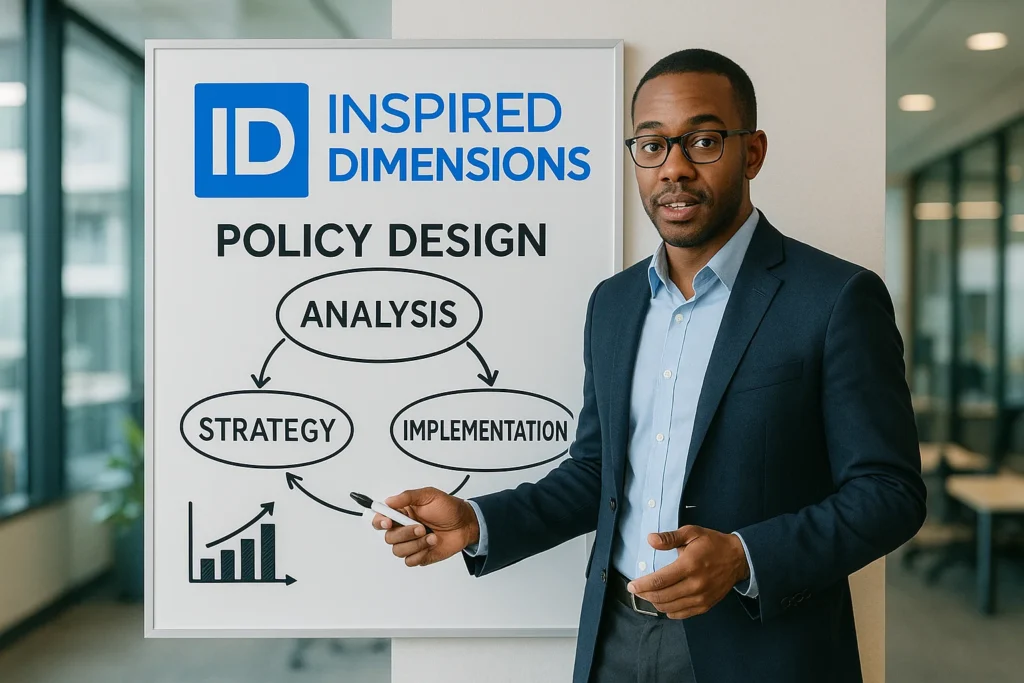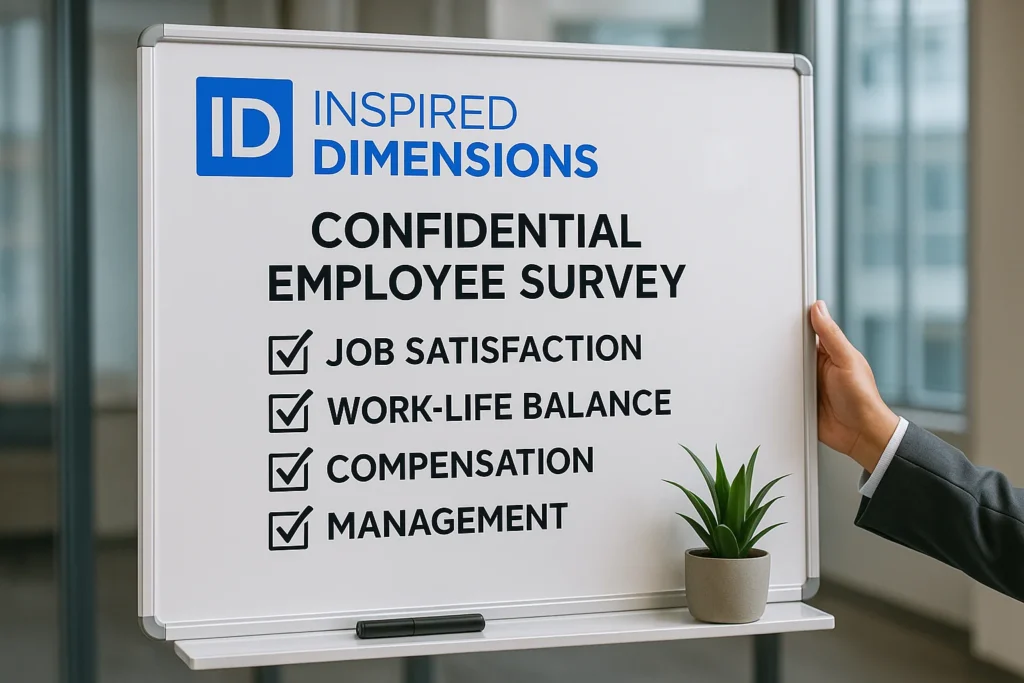Services
Inspired Dimensions offers specialized Human Resources consultancy services designed to align HR practices with organizational strategy.
Services
What we do

We pride ourselves in promoting the effectiveness of Human Resources as a strategic business partner through training and consultancy support on:
Compensation Strategy and Design
Bringing together all elements that form the basis of building a competitive and sustainable compensation approach for organisations.
Strategy Development
Determining compensation philosophy, identifying target compensation positioning relative to the market, and aligning reward with organisational goals and values.
Compensation Program Design
Creating structured pay components (base salary, bonuses, incentives, share plans, benefits) tailored to different roles, performance criteria, and strategic priorities.
Executive Compensation
Reward that is designed to attract, retain, and motivate executives while aligning their interests with shareholders. Elaborate individual differentiation is applied to reflect contribution, skills demand and long-term plans. Executive Compensation is often scrutinised by regulators, investors, and corporate governance advocates to ensure fairness and accountability.
Implementation Planning
Developing detailed plans to communicate, roll out, and administer the compensation system effectively within the organisation.

Inspired Dimensions assists clients in ensuring that compensation structures are sustainable, aligned to the client's long-term vision, are competitively positioned, and support overall corporate objectives.

Board Advisory Services
Company Boards often require expert independent opinion to advise on compensation practices.
Executive Compensation Decisions
Determination of executive compensation often needs independent input to ensure transparency, fairness, market alignment, and regulatory compliance.
At this level, compensation elements are complex requiring expert advisors to ensure clarity, accuracy, and effectiveness of design.
Employee Retention
Crafting strategies to retain key talent through competitive and innovative compensation programs.
Compliance and Governance
Independent advice to ensure compensation programs align with regulatory standards, corporate governance guidelines, and shareholder expectations. Faster and compliant adaptation to new laws or regulatory guidelines.
Mergers, Acquisitions and Organisational Restructuring
Independent advisory is crucial when compensation structures must be reviewed or redesigned following mergers, acquisitions, or significant organizational restructuring.
At Inspired Dimensions, we offer impartial expert insights that is critical for achieving competitiveness, fairness, regulatory compliance, and strategic organisational goals.
Policy Design
Efficient governance of compensation relies on strong policies that provide a consistent framework for decision making. Policies are built by considering relevant factors inclusive of business strategy, organisational maturity, industry and market benchmarking.
The policies work to ensure that the organisation complies with local regulations. At executive level, strong policies ensure that the interests of senior management is aligned with long-term interests of the shareholders.
Any gaps in policy coverage can result in inconsistent discretionary decision making that will be difficult to replicate or justify. It is therefore important to set the guardrails with a well-crafted policy framework.

We work with our clients to ensure that policy objectives are clear and built on strong governance framework for consistent application leaving little room for discretion.

Organisation Design
Determining how work is divided, coordinated, and controlled to maximize efficiency, innovation, and performance. Key elements of organisation design are as detailed.
Work Specialisation
Division of labour resulting in how tasks are divided following different models which could be functional, product-based, or matrix structures.
Hierarchy & Reporting Lines
Setting optimum spans of control, how many employees report to a manager and deciding on flat or tall organisational structures.
Departmentalisation
How are employees organised? Main options are by function, product, geography or customer segment.
Decision-Making Authority
Decision making approach, is it centralized (top-down) or decentralized (empowered teams) governance.
Formal vs. Informal Structures
Official hierarchies compared to emergent networks (e.g., innovation hubs, employee resource groups).
At Inspired Dimensions, we believe that efficient organisation design supports achievement of long-term goals, clarifies roles and career paths, adapts to organisation culture and promotes engagement.
Performance Management
Consistent performance management is achieved by setting SMART objectives for each employee. These objectives are derived from corporate goals and are refined at each level as they are distributed throughout the organization, ensuring that everyone contributes to the organization’s success. Line managers and employees should conduct regular check-ins to monitor progress and provide support to meet performance expectations.
Performance Management is closely related to other areas of Human Resources, as outlined below.
Compensation Management
Differentiating compensation based on performance achieved.
Employee Engagement
Clarity of expectations as well as timely feedback on progress.
Talent Management
Factored in key decision like, employee mobility, promotions and new assignments.

Inspired Dimensions has the expertise of designing customised Performance Management systems that support desired organisational objectives.

Confidential Employee Surveys
Knowing and understanding your employee opinion or feelings about their workplace is a powerful management insight tool. Gathering authentic and unbiased employee feedback is a delicate process that must be expertly managed.
Impactful surveys are developed through structured online tools that gather accurate responses on topics such as job satisfaction, engagement, leadership effectiveness, workplace culture, and organisational performance. This can also cover 360 degrees feedback on employee performance at any desired level.
No two surveys should be the same! Each survey must be adapted to each client and focus placed on the information being sought. Participation should be encouraged by a strong communication plan and should never be forced, or the quality and authenticity of responses might be impacted. Individual responses must be kept anonymous to encourage openness.
Inspired Dimensions partners with its clients to develop, analyse and interpret employee survey data. We believe that understanding how your employees feel about certain topics improves the work environment.
Connect with us today to get started!
Empower your workforce, elevate your business. Let’s build smarter HR solutions together — tailored to your people, your culture, your goals.






